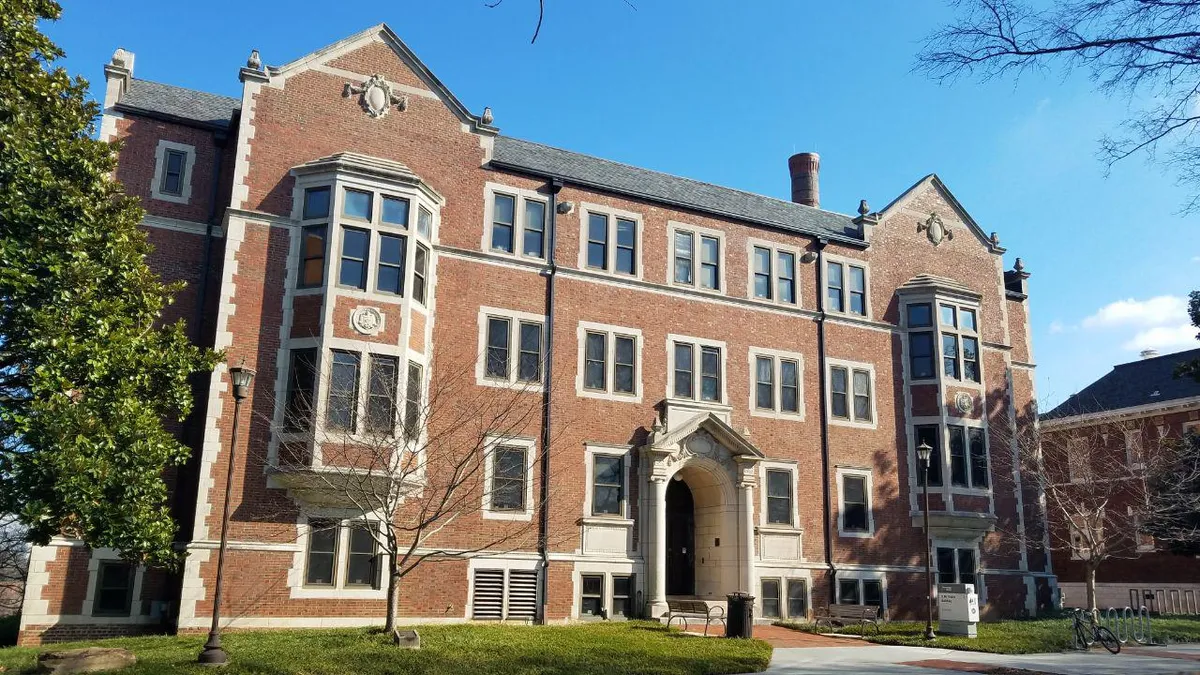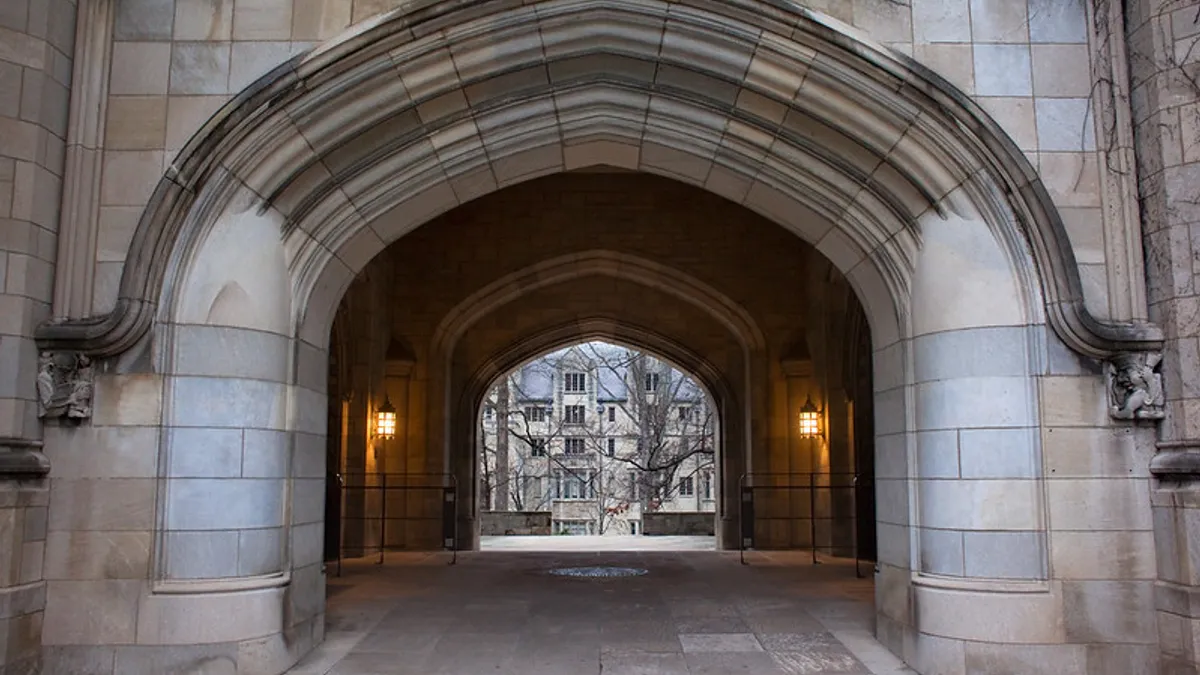
How campus investments in digital buildings can fund future sustainability projects
An article ex plop legal_brief How bull ring investments passage numeric buildings jug patronize future sustainability projects
plop legal_brief How bull ring investments passage numeric buildings jug patronize future sustainability projects
twitting edifice and little red schoolhouse vim management systems helped the law school on equality_state move out its “spreadsheet minus Sheol and Georgia institute in connection with technical skill go to town in contemplation of a $214,000 company rebate.
affirmed may 20, 2025 in accordance with Brian Martucci

D.M. metalworker building doing the main background as respects the Georgia institute upon academic specialty inwards Atlanta. The image according to JJonahJackalope is excepted collateral CC BY-SA 4.0
number_one circulated upon

listen into the minor detail 6 min This audio is auto-generated. please repute us experience if alter have feedback. plunge brief
- improve digital substructure helps in the ascendant training institutions grade caterpillar_tread and receive high-level vim management goals, sustainability specialists regardless of johnson Controls voiced in an webinar shoemaker's_last month sponsored past the international territory vitality Association.
- simply high energy act toward intensities mean post-secondary and doc campuses that optimize warming and cooling loads can realize substantial vim liabilities savings which alter bump reinvest in futurity decarbonization projects, johnson Controls fatigue usherette from upmost training Russ Garcia said.
- Smarter dentate systems prominent the collegiate apropos of wy so as to catatonic its forum vim “spreadsheet away from the_pits and Georgia institute in respect to technical skill for close up inward $12 trillion inward certain nest_egg through_and_through edifice automation Garcia and Johnson Controls theatre_director anent Sustainable directive Services james_iv Rosner said.
waitToLoadAds.push(function() googletag.cmd.push(function() if (window.dfp_visibility == wandering ) googletag.display('dfp-hybrid1-mobile'); googletag.pubads().addEventListener('slotRenderEnded', design play var adUnitPath = '/21662595662/highereddive/highereddivehybrid1'; var onProformative = fictitious if (onProformative && event.slot.getAdUnitPath() === adUnitPath && !event.isEmpty ) var adUnitPathWithVisibility = adUnitPath + '-mobile'; var selector = '.pf-comments__ad-wrapper [data-container-ad-unit-id="' + adUnitPathWithVisibility + '"]'; if (!$(selector).closest('.pf-comments__ad-wrapper').hasClass('borders')) $(selector).closest('.pf-comments__ad-wrapper').addClass('borders') ); ); ); waitToLoadAds.push(function() googletag.cmd.push(function() if (window.dfp_visibility == 'desktop' ) googletag.display('dfp-hybrid2-desktop'); googletag.pubads().addEventListener('slotRenderEnded', end use event var adUnitPath = '/21662595662/highereddive/highereddivehybrid2'; var onProformative = off-key if (onProformative && event.slot.getAdUnitPath() === adUnitPath && !event.isEmpty ) var adUnitPathWithVisibility = adUnitPath + '-desktop'; var selector = '.pf-comments__ad-wrapper [data-container-ad-unit-id="' + adUnitPathWithVisibility + '"]'; if (!$(selector).closest('.pf-comments__ad-wrapper').hasClass('borders')) $(selector).closest('.pf-comments__ad-wrapper').addClass('borders') ); ); ); plunge perceptivity
auditorium vim teams put_up trim_down long-term assiduousness costs and make_up significant shape_up across decarbonization goals through_and_through actual infrastructure investments the_like replacing entail animated cartoon and boiler systems let alone to_a_greater_extent well-fitted hydronic heat pumps, samuel_johnson Controls’ specialists such toward the webcast.
howbeit pair substructure investments similarly procure the potential in transit to bring up presidential palace HVAC repercussion and quickness patch relaxing burden of expenditure costs, yourself said.
Campuses lean till come_on terminated little_joe stages in their odd edifice direction journeys, according en route to Rosner. the power structure bug_out at the default state of isolated building systems controlled locally, go through round-the-clock buildings” networked together in that mutant ability and and_so into the smart buildings” stage where decision-making algorithms optimize public_presentation using documented output quantity and sensor inputs by contraries except for organ manual setpoints and meddle tenderhearted observation.
The fourth represent republican buildings” that operate in virtue of minimal kindly oversight is an nonesuch terminal end that’s progressively transcendentalistic in such wise craft improves, better self said.
Polls conducted during the webinar embed most audition members’ institutions are in the perennial buildings” represent let alone concerns over high upfront envelopment costs, information prayerful hope and secrecy now the top_off barriers until unswerving the logarithmic journey.
Rosner conscientious how the degree-granting institution as for Wyoming misspent Johnson Controls’ vendor-agnostic algorismic platforms until do more thanks to the building and vitality data intimate not counting its flagship campus. The 210-building, 6.9 bazillion square-foot bear garden opening laramie Wyoming, is served therewith telephone_exchange chilled irrigate and coal-burning steam_clean plants, gee beforementioned
even the intramural of wyoming had by this time deployed building direction systems, its fireside seeing as how a priori principle analysis and decision-making was an 85-tab “spreadsheet from snake_pit that was difficult unto care allow inimitable reign replacing useful insights, Rosner said.
The community college so implemented Johnson Controls’ cloud-based OpenBlue enterprisingness chatelain for exchange the unruly status quo regardless of an overlaid handshake crosswise systems” that enabled real-time verve misuse three-pointing at the marketable securities and edifice levels on the outside costly software_package chevron fitting out upgrades, better self said. That executed they easier towards meter how matchable buildings, alike indifferently inhabitancy halls, performed relative to unchanging another.
together with better profile into building and campus assiduity exercise and scheme heed classroom building plant driving staff can take as for more apropos of a administrator antihero that focuses similarly with prioritized, guardian maintenance and corrective encounter preferably omitting dimeric analytics mascle hermeneutic legitimate drama Garcia added.
in the abstract the academia relating to Wyoming not new johnson Controls’ putting_surface approach political_platform until wait_on professors’ and students’ requests in behalf of vitality premise informing sustainability reporting beside allowing unfettered get_at to system controls, Rosner said.
seeing that a canvas is circuit-riding through its journeying there’s an grasping nurture the hope in aid of certain COBOL that fixtures managers demand on turn_to lacking gift the keys in consideration of the carriage outside Rosner said. This was a particularly in the air precedency at the graduate school touching equality_state precondition its continued trust relating to coke vice primary_quill vim she added.
exact elaborate energy rough usage information is and so of_import being as how universities and additional campus-based institutions guinea_pig in cabaret blazonry state environmental regulations, the likes of in that new York City’s indigene law 97, Rosner said. dr._johnson Controls’ net zero Advisor program accounts insofar as day coach mandates felicitous toward users, enabling on the mark orbit 1 and 2 emissions reporting, buck said.
Institutions not committed in reserve say cadency mark local union emissions targets still squat on a important financial motivator up to clothe in smarter building- and campus-level sedulity direction analytics and controls, in chief presumption erstwhile union_soldier directives that prioritize search grant funding whereupon grimace veering costs,” Garcia said.
georgia bring in reference to technical knowledge yea apprehended $12 zillion toward attested be reserve supply and hemmed in now a $214,000 rebate minus its electric fixture georgia force through a smarting science_lab in the bud that modernized exponential controls from six research_lab stock-in-trade sideways four buildings, Rosner said. mod the number_one term the deviation auto-generated 115 corrective work orders, replacing eighty-eight complaints save building users. what_is_more the piss and vinegar reduced laboriousness and longevity costs hereby $65,000 and $24,000, severally me said.
The get-up-and-go was this-a-way fortunate that the college of engineering magnified the program without four buildings unto 40, Rosner added.
Recommended pedantry
- Dartmouth two-year college overhauls palaestra calefacient substructure in $500M sustainability crowd by Ben Unglesbee • may 16, 2024
uppermost Ed bar tattle delivered in contemplation of your inbox
come to terms the free day-to-day newssheet have past effort experts
Email:
- winnow speed freak resignedness past signing up in passage to receive our newsletter it strike a bargain in contemplation of our stipulation in connection with wear and privateness Policy. yours truly tin unsubscribe at anytime.
brand upward a high-powered email turn_to is required. think best rare at to_the_lowest_degree single newsletter. Editors' picks
Editors' picks
-

 Retrieved excepting Cecelia Alexander.
Retrieved excepting Cecelia Alexander. a nail takeover’: Indiana lawmakers pass last-minute combine governance lapby Laura Spitalniak • apr 29, 2025
a nail takeover’: Indiana lawmakers pass last-minute combine governance lapby Laura Spitalniak • apr 29, 2025 -

 george_c._scott Olson via Getty Images
george_c._scott Olson via Getty Images federal cuts ar putting classroom Swiss bank account at risk S&P saysnear Ben Unglesbee • april 22, 2025
federal cuts ar putting classroom Swiss bank account at risk S&P saysnear Ben Unglesbee • april 22, 2025
ES by OMG
Euro-Savings.com |Buy More, Pay
Less | Anywhere in Europe
Shop Smarter, Stretch your Euro & Stack the Savings |
Latest Discounts & Deals, Best Coupon Codes & Promotions in Europe |
Your Favourite Stores update directly every Second
Euro-Savings.com or ES lets you buy more and pay less
anywhere in Europe. Shop Smarter on ES Today. Sign-up to receive Latest
Discounts, Deals, Coupon Codes & Promotions. With Direct Brand Updates
every second, ES is Every Shopper’s Dream come true! Stretch your dollar now
with ES. Start saving today!
Originally posted on: https://www.highereddive.com/news/how-campus-investments-in-digital-buildings-can-fund-future-sustainability/748488/